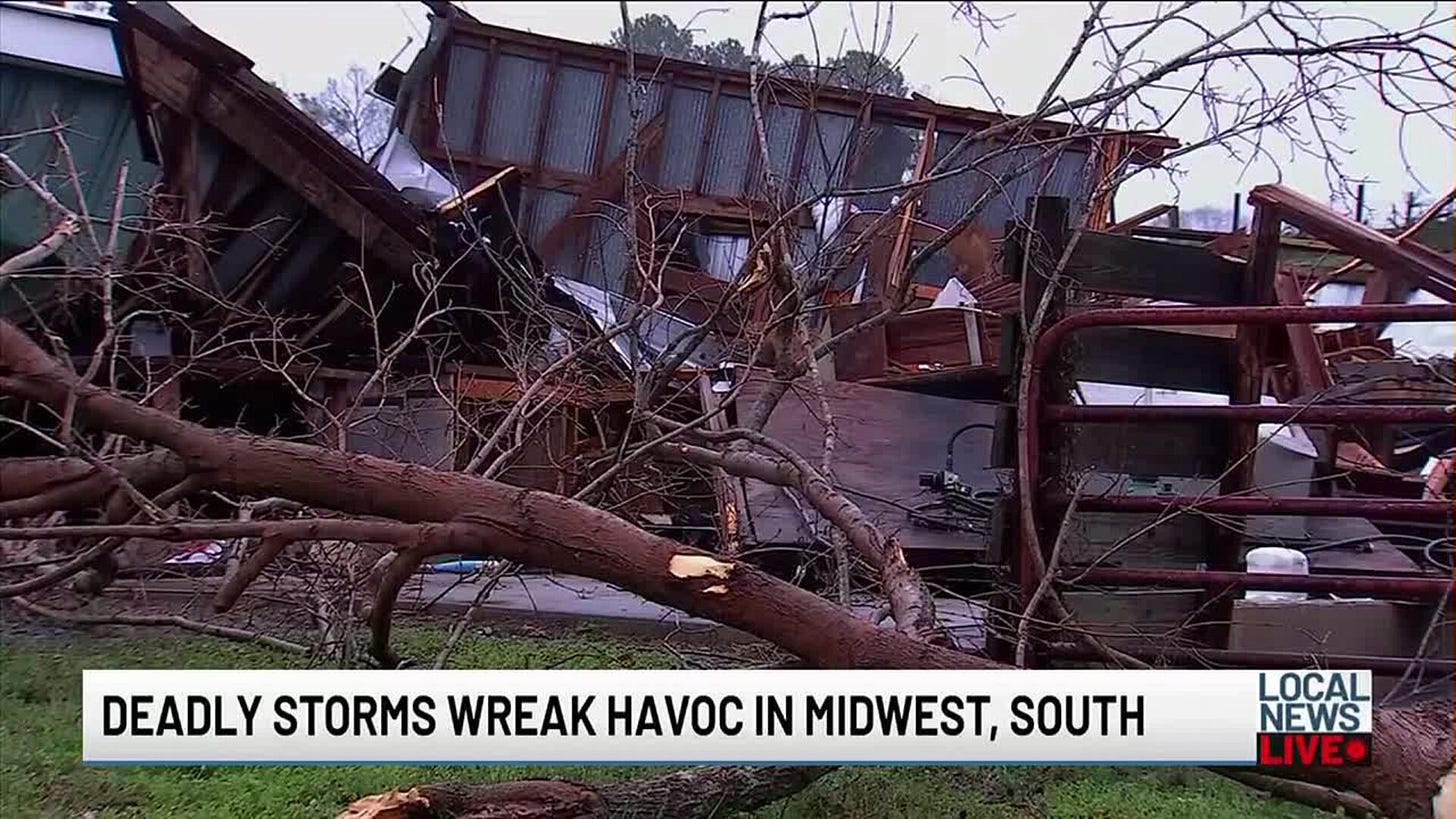As Midwest Storms Rage, Trump's War on Science Puts Lives at Risk
As 71 million Americans across the Midwest and South brace for potentially catastrophic flooding and tornadoes this week, they're doing so with significantly reduced support from federal disaster agencies. The National Weather Service warns of "significant, life-threatening flash flooding," while the federal agencies responsible for tracking these storms and coordinating emergency response are being systematically dismantled.
The Deliberate Dismantling of Disaster Response
"We're eliminating FEMA” – Homeland Security Secretary, Kristi Noem
The Trump administration has already cut more than 1,000 staff from the National Oceanic and Atmospheric Administration (NOAA), with another 1,000 expected to be removed soon. Hundreds of FEMA employees have also been fired, particularly those working on climate resilience and disaster risk reduction.
These cuts directly threaten public safety. NOAA operates the satellites and weather stations that provide life-saving forecasts, while FEMA coordinates emergency response and distributes critical recovery funds after disasters strike. When these agencies are understaffed, warnings come later, emergency response slows, and communities ultimately face more destruction and higher rebuilding costs.
Real Consequences for Real Communities
For Midwestern communities in the path of this week's severe storms, these agency cuts have immediate, tangible consequences:
Less accurate tornado and flood warnings due to reduced data collection and fewer meteorologists
Slower deployment of emergency resources when minutes can mean the difference between life and death
Reduced coordination between federal, state, and local emergency responders
Longer waits for disaster relief funds for families who lose homes and businesses
The unprecedented frequency of disasters makes these cuts particularly dangerous. FEMA now responds to about 130 disasters annually – triple what it did a few decades ago. We're only four months into 2025, and the agency has already tracked 36 separate disasters – more than occurred in all of 1986.
Meanwhile, the costs of climate disasters continue to skyrocket. The LA wildfires caused an estimated $250 billion in damages, while Hurricane Helene inflicted approximately $200 billion in destruction. That's $450 billion from just two disasters. Here, the critical question becomes: who pays for this mounting toll? Right now, the answer is everyday families and taxpayers, not the fossil fuel companies whose products created the climate crisis in the first place.
The Science Silencers
Project 2025 explicitly calls to "Break Up NOAA," describing it as "one of the main drivers of the climate change alarm industry."
Climate change is making disasters more frequent and severe, and by hobbling the agencies that track, predict, and respond to these changes, the administration has put politics above public safety. As Jeffrey Kluger of TIME Magazine notes, these cuts represent minuscule budget savings (0.097% of federal spending) but will have devastating consequences for communities needing accurate forecasts and timely disaster response.
The Industry That Benefits
While these agency cuts harm everyday Americans, they clearly benefit certain industries… particularly fossil fuel companies whose products directly contribute to the climate crisis.
By hobbling the agencies that document climate change and its impacts, the administration makes it harder to hold polluters accountable. Meanwhile, those same polluters continue to report record profits quarter after quarter.
This creates a perverse system where those who profit from pollution pay nothing toward the escalating costs of climate disasters, while families, communities, and taxpayers bear the entire burden.
A Better Way Forward
The storms threatening the Midwest will eventually pass, but others will follow with increasing frequency as climate change accelerates. States like Vermont and New York recognize this unsustainable system and have passed climate superfund legislation requiring fossil fuel companies to pay their fair share for climate damages, creating sustainable funding for disaster preparation, response, and recovery.
As federal agencies that once protected Americans are hollowed out, these state-level efforts create a critical alternative where climate disaster costs are shared more fairly between polluters and the public. Midwestern communities deserve both functioning federal disaster agencies and a system where polluters help pay for the climate crisis they've helped create.



End (false) king trump reign.